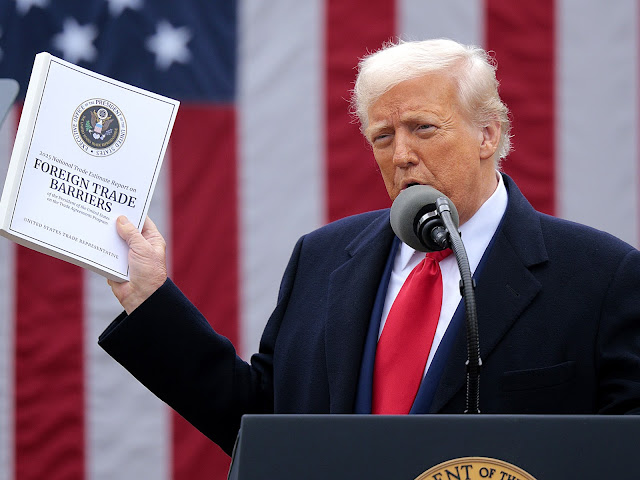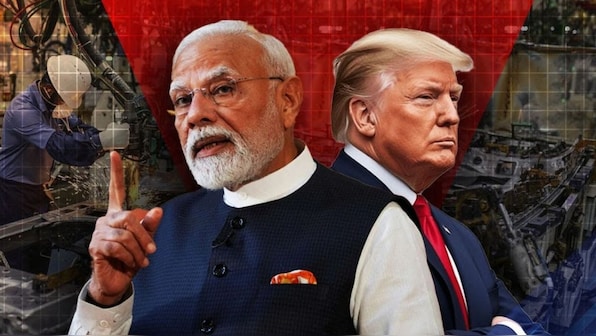In a landmark decision on August 30, 2025, the US Court of Appeals for the Federal Circuit delivered a significant blow to President Donald Trump’s trade agenda, striking down most of the tariffs he imposed through executive orders in 2024. In a 7-4 ruling, the court declared these tariffs illegal, asserting that they exceeded the president’s authority under the International Emergency Economic Powers Act (IEEPA). The judges emphasized that the power to impose tariffs is a core congressional prerogative, and the IEEPA, enacted in 1977, does not grant the president the sweeping authority to implement such measures unilaterally. This ruling, which affects Trump’s “reciprocal” tariffs applied globally and specific levies on countries like China, Mexico, and Canada, has sparked intense debate about the limits of presidential power, the future of US trade policy, and the economic implications for both domestic and international stakeholders. While the decision is stayed until October 14, 2025, to allow for an appeal to the US Supreme Court, it sets the stage for a high-stakes legal battle that could redefine the boundaries of executive authority.
Background and Context of the Ruling
The Federal Circuit’s decision stems from a series of lawsuits challenging the legality of tariffs imposed by President Trump in 2024, following his return to the White House after a successful re-election campaign. These tariffs, which included a baseline 10% levy on nearly all countries and additional “reciprocal” tariffs targeting specific trading partners, were justified by the Trump administration under the IEEPA. The 1977 law grants the president broad powers to address “unusual and extraordinary threats” to national security, foreign policy, or the economy during a declared national emergency. Trump invoked this authority to argue that trade imbalances and issues such as fentanyl trafficking constituted such threats, necessitating the tariffs to protect US economic and security interests.
The tariffs were a cornerstone of Trump’s economic agenda, designed to promote domestic manufacturing, reduce trade deficits, and exert pressure on trading partners to negotiate more favorable deals. The administration claimed that the levies had generated significant revenue, with estimates suggesting over $100 billion collected in customs duties between February and July 2025 alone. However, the tariffs also sparked controversy, with critics arguing that they raised costs for American consumers and businesses, contributed to inflation, and strained relations with key trading partners.
The legal challenges to the tariffs were brought by a coalition of small US businesses and 12 Democratic-led states, who argued that the IEEPA does not authorize the president to impose tariffs and that such actions encroach on Congress’s constitutional authority to regulate commerce and impose taxes. The New York-based US Court of International Trade initially ruled against the tariffs on May 28, 2025, declaring them unlawful. That decision was stayed pending an appeal to the Federal Circuit, which heard oral arguments in late July 2025. The appeals court’s ruling on August 30 upheld the lower court’s findings, delivering a significant setback to Trump’s trade policy.
The Court’s Reasoning and Legal Implications
The Federal Circuit’s 7-4 decision was grounded in a detailed analysis of the IEEPA and its intended scope. The majority opinion, supported by seven of the eleven active judges, rejected the Trump administration’s argument that the IEEPA’s language, which allows the president to “regulate… importation” during a national emergency, includes the authority to impose tariffs. The court emphasized that tariffs are a form of taxation, a power explicitly vested in Congress under the US Constitution. “The core Congressional power to impose taxes such as tariffs is vested exclusively in the legislative branch by the Constitution,” the majority wrote, underscoring that the IEEPA “neither mentions tariffs (or any of its synonyms) nor has procedural safeguards that contain clear limits on the president’s power to impose tariffs.”
The judges further argued that Congress, when enacting the IEEPA in 1977, did not intend to grant the president “unlimited authority to impose tariffs.” They pointed to other statutes, such as the Trade Act of 1974 and Section 232 of the Trade Expansion Act of 1962, where Congress explicitly delegated tariff authority to the president with clear limitations. For example, the Trade Act allows the president to impose tariffs of up to 15% for a maximum of 150 days to address balance-of-payment deficits, a far more restrictive framework than the broad interpretation advanced by the Trump administration. The absence of similar language in the IEEPA, the court reasoned, indicates that Congress did not intend for the law to be used as a tool for imposing sweeping tariffs.
The ruling specifically targeted two sets of tariffs: the “reciprocal” tariffs, which imposed a baseline 10% levy on nearly all countries with additional rates as high as 34% for specific nations like China, and the “trafficking” tariffs aimed at China, Mexico, and Canada to address issues like fentanyl smuggling. The court found that these tariffs were “unbounded in scope, amount, and duration,” exceeding the authority granted by the IEEPA. Notably, the ruling does not affect other tariffs imposed by Trump under different authorities, such as those on steel and aluminum, which were enacted under Section 232 of the Trade Expansion Act.
The four dissenting judges, led by Circuit Judge Richard Taranto and including Chief Judge Kimberly Moore, argued that the IEEPA does provide the president with some authority to impose tariffs, particularly in the context of national emergencies related to foreign affairs. They cited the 1975 case United States v. Yoshida International, where the Court of Customs and Patent Appeals upheld President Richard Nixon’s use of the Trading with the Enemy Act (TWEA), a predecessor to the IEEPA, to impose a 10% import surcharge. The dissenters contended that the IEEPA’s language, which mirrors the TWEA, supports a broader interpretation of presidential power in this realm. However, the majority rejected this analogy, noting that modern statutory interpretation focuses on the plain meaning of the text and that the IEEPA was intended to limit, rather than expand, executive authority compared to the TWEA.
Political and Economic Reactions
The ruling elicited a swift and fiery response from President Trump, who took to his Truth Social platform to denounce the decision as the work of a “highly partisan” court. He warned that removing the tariffs would “literally destroy the United States of America,” arguing that they were essential for economic strength, national security, and the promotion of domestic manufacturing. “If these tariffs ever went away, it would be a total disaster for the Country. It would make us financially weak, and we have to be strong,” Trump wrote. He expressed confidence that the US Supreme Court would overturn the ruling, citing its conservative majority, which includes three justices he appointed during his first term.
The Trump administration’s legal team had warned during the appeals process that invalidating the tariffs could have catastrophic economic consequences, likening the potential fallout to the 1929 stock market crash that triggered the Great Depression. They argued that the tariffs were critical to protecting US national security and foreign policy interests, particularly in negotiations with trading partners like the European Union, Japan, and South Korea. The administration claimed that the levies had secured commitments worth trillions of dollars from other countries, bolstering the US economy.
Critics of the tariffs, including the plaintiffs in the lawsuits, celebrated the ruling as a victory for constitutional checks and balances. Jeffrey Schwab of the Liberty Justice Center, representing the small-business plaintiffs, stated, “This decision protects American businesses and consumers from the uncertainty and harm caused by these unlawful tariffs.” Neal Katyal, co-counsel in the case, described the tariffs as an “illegal and dangerous usurpation of congressional authority,” emphasizing that the ruling reaffirmed the principle that presidents must operate within the rule of law.
Economists and industry leaders expressed mixed reactions. Some warned that the tariffs had contributed to rising inflation and higher costs for consumers, particularly small businesses reliant on imported goods. Others noted that the revenue generated by the tariffs—estimated at $142 billion by July 2025—had been a significant source of federal income, potentially offsetting losses from other tax policies. However, the ruling’s delay until October 14 provides a window for the administration to appeal to the Supreme Court, potentially prolonging the uncertainty for businesses and trading partners.
The Path to the Supreme Court
The Federal Circuit’s decision is widely expected to be appealed to the US Supreme Court, setting the stage for a major legal showdown over the scope of presidential powers. The Supreme Court, with its 6-3 conservative majority, including three Trump-appointed justices, has a mixed record on executive authority. Recent rulings, such as the 2023 decision blocking President Joe Biden’s student loan forgiveness program, suggest a skepticism toward expansive executive actions not explicitly authorized by Congress, particularly under the major questions doctrine, which requires clear congressional intent for significant policy changes. However, the court has also upheld broad presidential powers in foreign affairs, which could bolster the administration’s case.
The case could have far-reaching implications for the balance of power between the executive and legislative branches. If the Supreme Court upholds the Federal Circuit’s ruling, it would reinforce Congress’s authority over trade policy and limit the president’s ability to use emergency powers to impose tariffs. Conversely, a ruling in favor of the administration could expand the scope of executive authority under the IEEPA, potentially allowing future presidents to use the law for a wide range of economic measures.
For businesses and consumers, the outcome will also determine whether billions of dollars in tariff payments can be refunded. Importers who paid the duties may seek reimbursements through the US Customs and Border Protection, a process that could be lengthy and complex. The ruling also raises questions about the validity of trade agreements negotiated under the threat of tariffs, as countries like the European Union and Japan may reconsider their commitments if the levies are struck down.
Broader Implications for US Trade Policy
The Federal Circuit’s ruling comes at a critical juncture for US trade policy, as Trump’s tariffs have been a defining feature of his second term. The levies have been credited with generating significant revenue and pressuring trading partners to negotiate, but they have also drawn criticism for increasing costs and creating market volatility. Economists have noted that inflation has ticked upward in recent months, partly due to the tariffs, while businesses have faced challenges navigating the uncertainty of fluctuating trade policies.
The decision does not affect tariffs imposed under other authorities, such as Section 232 or Section 301 of the Trade Act of 1974, which Trump has used to target specific industries like steel and aluminum. The administration could pivot to these mechanisms to continue its trade agenda, potentially launching new investigations to justify additional tariffs. However, such measures would face their own legal and political hurdles, particularly if Congress seeks to reassert its authority over trade policy.
Conclusion
The US Court of Appeals for the Federal Circuit’s 7-4 ruling striking down most of President Trump’s tariffs represents a significant challenge to his economic agenda and a reaffirmation of Congress’s constitutional authority over trade. By rejecting the use of the IEEPA to justify the tariffs, the court has set the stage for a high-stakes appeal to the Supreme Court, which could reshape the limits of presidential power. Trump’s vocal criticism of the ruling and the administration’s warnings of economic collapse underscore the contentious nature of the issue, while critics celebrate the decision as a victory for the rule of law. As the October 14 deadline approaches, the outcome of this legal battle will have profound implications for US trade policy, the economy, and the balance of power between the branches of government.








